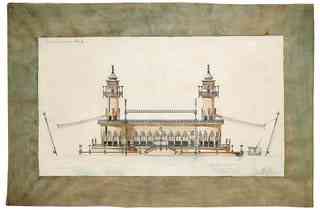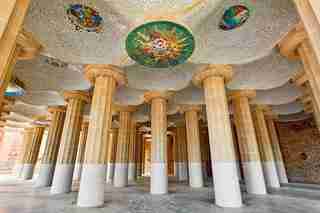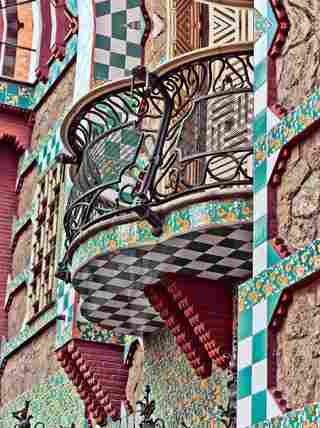Amid Barcelona’s Gothic and contemporary architecture, a bevy of buildings stand out for their unusual style—they are the masterpieces by hometown architect Antoni Gaudí. Born in 1852, Gaudí designed some of the city’s most iconic landmarks—from the towering (and as of yet still incomplete) Sagrada Familia cathedral to the whimsical Parc Güell, not to mention a number of residences, all of which are among the most visited attractions in Barcelona today. For these works, Gaudí developed his own visual language as part of the Catalan Modernista movement that riffed on elements of Art Nouveau, drawing inspiration nature and complicated geometry to create abstracted, undulating forms. The architect is the subject of the new book Gaudí. The Complete Works ( $60, Taschen ) by Rainer Zerbst, which dives into not only his famous buildings but also his forays into furniture and interior design, as well as his unfinished projects. Here, we take a peek inside its pages.

Gaudí studied at the Barcelona School of Architecture at the Universitat Politècnica de Catalunya, where he investigated a number of historical architectural styles. In this drawing for a pier, which he drew as a student in 1876, he incorporated everything from Moorish to classical elements.

His investigation into classical architecture extended to Barcelona’s Parc Güell, where Doric-inspired columns fill the market hall. But in signature Gaudí style, the ceiling is decorated with colorful mosaics. The park was built between 1900 and 1914.

An earlier project constructed between 1878 and 1888, Casa Vicens in Barcelona has wrought-iron balconies that display similarities to many Art Nouveau structures. But its colorful mosaic-clad façade is definitively Gaudí.
Built between 1883 and 1885, the El Capricho house in the town of Comillas in Northern Spain has a minaret inspired by the Shah Mosque in Isfahan, Iran .
Barcelona’s Güell Palace, completed in 1889, features a playful take on Gothic architecture.
Parc Güell’s main terrace offers a broad view of the city.
Gaudí was known for using some unusual building materials—the finials shown here, found in Parc Güell, are decorated with mosaics made from broken coffee cups.
The Sagrada Familia is perhaps Barcelona’s most famous landmark. Gaudí began the project in 1883, but it was not completed by the time of his death in 1926, and construction continues today.
Though Gaudí had passed away long before the interiors of the Sagrada Familia were constructed, his visual style lives on. Zerbst writes in the introduction to the book: “‘Do you want to know where I found my model?’ [Gaudí] once asked a visitor to his workshop. ‘An upright tree; it bears its branches and these, in turn, their twigs, and these, in turn, the leaves. And every individual part has been growing harmoniously, magnificently, ever since God the artist created it.”
Gaudí. The Complete Works by Rainer Zerbst.
